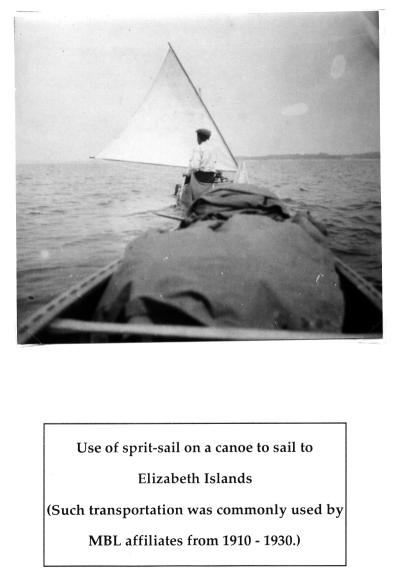Matching Items (1,498)
Filtering by
- Creators: Marine Biological Laboratory Archives
ContributorsMozart, Wolfgang Amadeus, 1756-1791 (Composer)
ContributorsMozart, Wolfgang Amadeus, 1756-1791 (Composer)

Description
In this dissertation I present data gathered from an eleven-month qualitative research study with adolescents living and working on the streets of Lima, Peru. Through the pairing of photovoice with participant observations, this work incorporates distinctive methodological and theoretical viewpoints in order to complicate prevailing understandings of street life. In this dissertation, I examine the identities that children and adolescents on the street develop in context, and the ways in which photography can be a useful tool in understanding identity development among this population. Through a framework integrating theories of identity and identity performance with spatial theories, I outline how identity development among children and adolescents living on the street is directly connected to their relationships with the urban landscape and the outreach organizations that serve them. The organizations and institutions that surround children on the street shape who they are, how they are perceived by society, and how they view and understand themselves in context. It is through the interaction with aid organizations and the urban landscape that a street identity is learned and developed. Furthermore, as organizations, children and adolescents come together within the context of the city, a unique street space is created. I argue that identity and agency are directly tied to this space. I also present the street as a thirdspace of possibility, where children and adolescents are able to act out various aspects of the self that they would be unable to pursue otherwise. Weaved throughout this dissertation are non-traditional writing forms including narrative and critical personal narrative addressing my own experiences conducting this research, my impact on the research context, and how I understand the data gathered.
ContributorsJoanou, Jamie Patrice (Author) / Swadener, Beth B. (Thesis advisor) / Margolis, Eric (Committee member) / Arzubiaga, Angela (Committee member) / Fischman, Gustavo (Committee member) / Arizona State University (Publisher)
Created2011

Description
This dissertation discusses the findings of an ethnographic exploratory study of Turkana nomadic pastoralist children's sociocultural practices of their everyday lifestyles and science curriculum and instruction in Kenyan early childhood curriculum. The study uses the findings from Turkana elders to challenge the dominant society in Kenya that draws from Western education ideology to unfairly criticize Turkana traditional nomadic cultural practices as resistant to modern education. Yet Turkana people have to rely on the cultural knowledge of their environment for survival. In addition, the community lives in abject poverty caused by the harsh desert environment which has contributed to parents' struggle to support their children's education. Cultural knowledge of Turkana people has received support in research demonstrating the role cultural lifestyles such as nomadic pastoralism play as important survival strategy that enable people to adapt to the harsh desert environment to ensure the survival of their livestock critical for their food security. The study documented ways in which the Kenya national education curriculum, reflecting Western assumptions about education, often alienates and marginalises nomadic children, in its failure to capture their cultural Indigenous knowledge epistemologies. The research investigated the relationships between Turkana children's sociocultural practices of pastoralist lifestyles and the national science curriculum taught in local preschools and first grade science classrooms in Kenya and the extent to which Turkana children's everyday life cultural practices inform science instruction in early childhood grades. Multiple ethnographic methods such as participant and naturalistic observation, focus group interviews, analysis of documents, archival materials, and cultural artifacts were used to explore classrooms instruction and Indigenous sociocultural practices of the Turkana nomads. The findings from the elders' narratives indicated that there was a general congruence in thematic content of science between Turkana Indigenous knowledge and the national science curriculum. However, Turkana children traditionally learned independently by observation and hands-on with continuous scaffolding from parents and peers. The study recommends a science curriculum that is compatible with the Indigenous knowledge epistemologies and instructional strategies that are sensitive to the worldview of nomadic children.
ContributorsNg'asike, John Teria (Author) / Swadener, Beth B. (Committee member) / Luft, Julie (Committee member) / Tobin, Joseph (Committee member) / Brayboy, Bryan (Committee member) / Arizona State University (Publisher)
Created2010

ContributorsMarine Biological Laboratory Archives (Publisher) / Arizona Board of Regents (Publisher)
Created1935

ContributorsHuettner, Alfred F. (Alfred Francis), b. 1884 (Creator) / Marine Biological Laboratory Archives (Publisher)
Created1918

ContributorsMarine Biological Laboratory Archives (Publisher)

ContributorsHuettner, Alfred F. (Alfred Francis), b. 1884 (Creator) / Marine Biological Laboratory Archives (Publisher)
Created1928

ContributorsHuettner, Alfred F. (Alfred Francis), b. 1884 (Creator) / Marine Biological Laboratory Archives (Publisher)
Created1918

ContributorsHuettner, Alfred F. (Alfred Francis), b. 1884 (Creator) / Marine Biological Laboratory Archives (Publisher)